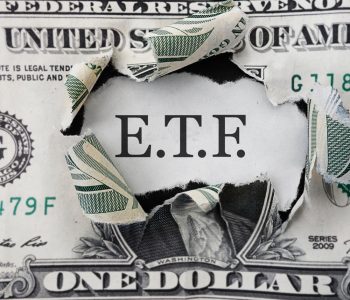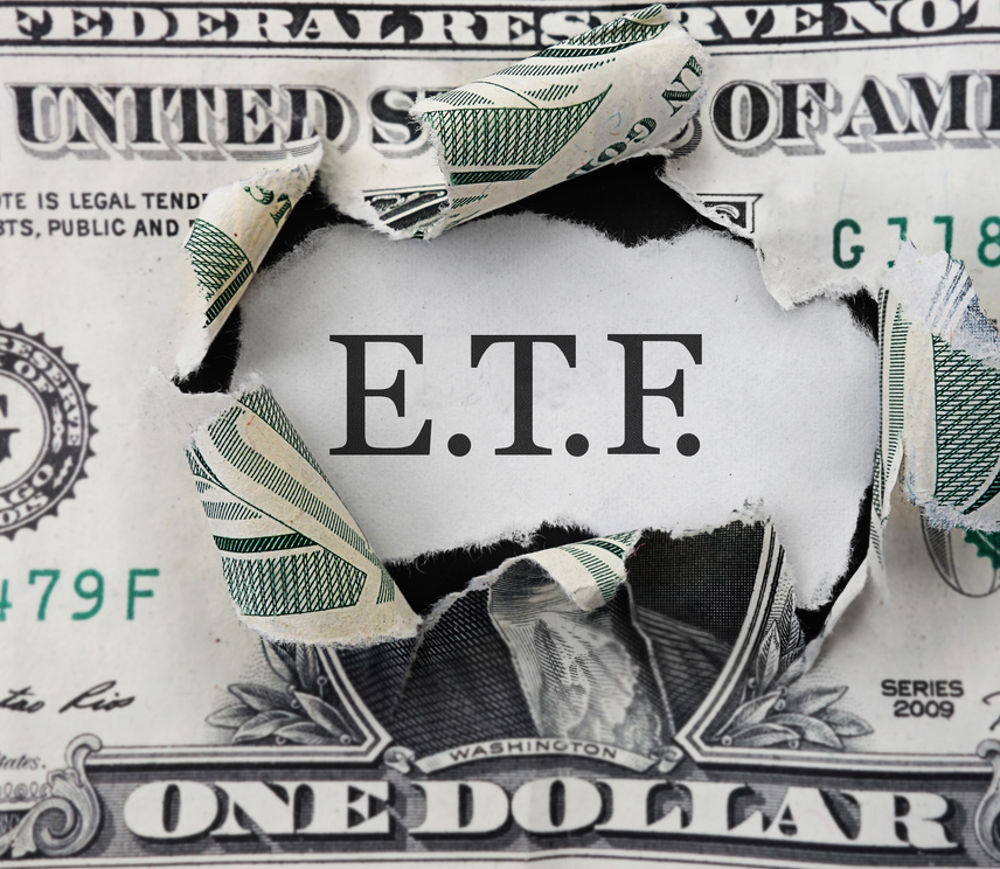5 Top Financial ETFs to Watch in 2017

Top Financial ETFs
Finding the next investment idea can be difficult at times. Doing so requires looking ahead and determining what catalysts will impact various investments. One way to do this is to look at the company’s past as well and find similarities to the present. Finding key catalysts and trends at low levels is how investors make their money.
One key indicator has been interest rates. These impact almost all investments and can be very beneficial to those in the financials sector. Most important is the present rates and the direction of future rates.
One way to benefit from interest rates is by investing in financial exchange-traded funds (ETFs). Below is a list of the top financial ETFs that you might want to consider an ownership stake in. But before getting into the list, I will explain why and how financial ETFs can be a boon for investors.
Why Consider Financial ETFs Now?
When investing in any asset, the expectation is that the money put in is going to grow. This is a likely result for financial ETFs due to rising interest rates. These are the biggest catalyst that affects the top and bottom line of the financial statements.
From 2009 to 2015, interest rates were sitting at historic low levels, ending only with a rate increase by the U.S. Federal Reserve. Another hike occurred in 2016, meaning that increases could become a recurring trend that is only in the beginning stages. After all, with interest rates at historic lows, there is really nowhere to go but up.
But just because interest rates are at historic lows does not mean that the Fed will simply increase rates. One potential reason for a hike is the growth of the overall economy making it able to withstand higher interest rates. This means there could be a number of jobs created, as well as wage growth.
As the economy is growing, it means that inflation becomes a problem, as higher interest rates mean inflation is more in control. The benefit of higher inflation, however, is that saving products available from your bank, such as savings accounts, money market investments, and certificates of deposit (CD), will provide a greater return and create more of a demand.
All this helps financial companies, which could benefit investors. Higher interest rates mean that margins within financial companies will increase as well; this is known as net interest margins.
Net interest margins are very simple to calculate: as the financial institute takes in money from savers and investors, it pays out an interest rate. The institute then takes that same money and lends it out to a customer in the form of a line of credit or mortgage.
The interest rate charged on the loan comes with a higher interest rate than what the saver or investor is receiving. The net interest margins are then calculated using the interest rate that is charged on the borrowed money and the one that is given on the savers/investors. As interest rates increase, the net interest margins of the financial companies do as well, as reflected in their revenue and net income.
Another reason why financial companies will benefit is the increased demand for their products and services. This is because more individuals are expected to be working in the country and generating a higher income. Also, with higher interest rates, returns on savings and investment products will be in more demand as well.
Here is a list of the five top financial ETFs for 2017 worth considering.
List of the Best Financial ETFs
| ETF Name | ETF Symbol |
| Financial Select Sector SPDR Fund | XLF |
| SPDR KBW Regional Banking (ETF) | KRE |
| First Trust Financials AlphaDEX Fund | FXO |
| iShares Dow Jones US Financial Services ETF | IYG |
| Vanguard Financials ETF | VFH |
1. Financial Select Sector SPDR Fund
Financial Select Sector SPDR Fund (NYSEARCA:XLF) attempts to track the price and yield performance of companies within the Financial Select Sector Index. At least 95% of the ETF’s capital is invested in the underlying index. Holdings within the ETF include insurance companies, banks, real estate investment trusts (REIT), mortgage finance companies, and real estate management and development companies.
There are more than 60 companies within the ETF, providing diversification to one’s portfolio and exposure to the financial sector. Its dividend is paid out on a quarterly basis and has grown over time.
Another reason to consider this ETF would be the gradual upward trend in interest rates, which reflect in the earnings estimates of the companies held. The average three-to-five-year estimate on earnings growth for the companies held within XLF is just north of 10%. This should eventually reflect in the share price of the holdings and, in turn, the price of the ETF. (Source: “Financial Select Sector SPDR Fund,” State Street Global Advisors, last accessed May 23, 2017.)
Also the holdings within XLF are some of the largest financial companies in the world the top three holdings include: Berkshire Hathaway Inc. (NYSE:BRK.B), JPMorgan Chase & Co. (NYSE:JPM) and Wells Fargo & Co (NYSE:WFC). These are companies that have large market shares and have a track record for rewarding their shareholders over the long term with dividends and price appreciation of the stock price. Also the companies held within XLF have a presence around the entire country and around the world; which adds to the global diversification.
2. SPDR KBW Regional Banking ETF
SPDR KBW Regional Banking (ETF) (NYSEARCA:KRE) replicates the total return of the S&P Regional Banks Select Industry Index, an underlying index. All investments are made in U.S. regional banks that operate in a specific regions of the country.
There are 100 holdings within KRE, with a focus on having the capital distributed as evenly as possible. The holdings are more focused on small- and medium-sized businesses (SMBs) based on market cap.
A common issue with SMBs is that they are illiquid to trade, making it difficult to get in and out of a position. In addition, when placing a trade on illiquid stocks, it’s harder to determine the price that trade would be executed at. This issue is resolved with, KRE since it is very liquid and holds small- and mid-cap financial companies.
KRE is also a very cheap method of getting exposure to smaller financial companies that trade on the markets, given its management expense ratio (MER) of 0.35%. This means that for every $10,000 invested in KRE per year, management takes $35.00. This fee goes towards commission costs for trades, regulatory fees to the Securities and Exchange Commission (SEC), and exchange fees. For $35.00 a year, this sounds like a bargain.
The dividend is paid on a quarterly basis and is gradually increasing over time.
3. First Trust Financials AlphaDEX Fund
First Trust Financials AlphaDEX Fund (NYSEARCA:FXO) invests at least 90% of its capital into securities that make up the StrataQuant Financials Index. This sub-index is part of the Russell 1,000 Index.
There are over 150 stocks within the FXO ETF, all of which are companies that trade in the U.S. The top three sub-sectors that are reflected in the holdings are insurance, equity REITs, and banking services.
The weighing within this ETF is done on an equal basis; no one position accounts for a larger amount of capital. And if one position were to skyrocket and become a greater position, then it would be trimmed back, meaning a rebalancing of the whole portfolio. Such rebalancing is done on a quarterly basis and could cause certain stocks to leave the portfolio if they no longer met the ETF’s criteria.
The dividend is also paid quarterly. As the dividend is paid from the holdings, it is passed to stockholders; as the stocks increase, so too does the dividend.
This ETF also gives exposure to companies that income investors would otherwise ignore due to their lack of a dividend. An example of one of these holdings is Square Inc. (NYSE:SQ), a mobile payment company. Mobile is the future direction of payment methods, making Square a notable holding. This reflects in the share price of the ETF, which is how you would benefit from such a holding. Also consider that there always the possibility of the company paying a dividend in the future.
4. iShares Dow Jones US Financial Services ETF
iShares Dow Jones US Financial Services ETF (NYSEARCA:IYG) seeks to track the returns of the Dow Jones U.S. Financial Services Index. The threshold for the ETF is to invest a minimum 90% of its assets into the stocks that make up the index.
Even though IYG is invested in stocks that are based in the financial sector, it remains very diversified. There are nine different sub-sectors represented, including bank stocks, consumer lending business support services, and investment management companies. The top holdings consist of the likes of Bank of America Corp (NYSE:BAC), Visa Inc (NYSE:V), and Charles Schwab Corporation (NYSE:SCHW), all of which focus on different areas in the financial sector.
Many positions across different market segments are a major benefit of financial ETFs. Also, if one financial segment outperformed another, it would be reflected via ETF. This could save you a lot on commission fees compared to purchasing each position individually.
Adding to or removing a position from your investment portfolio is quite easy thank to IYG’s high daily volume. It is also very cheap to own based on its MER thanks to successful record keeping, investment decisions, and salary payments for the portfolio managers.
5. Vanguard Financials Index Fund ETF
Vanguard Financials Index Fund ETF (NYSEARCA:VFH) is designed to track the performance returns of the MSCI U.S. Investable Market Index (IMI)/Financials 25/50 Index. The index is made up of small-, mid-, and large-cap financial stocks based in the U.S. The portfolio manager attempts to invest all the capital within VFH in the holdings that make up the underlying index.
There are more than 350 stocks within the ETF, none of which counts for more than nine percent. The larger the company in terms of market size, the more capital allocated towards it. Such companies generally have a long history of operations and rewarding investors.
More than half the capital is invested into companies that offer banking services like everyday banking needs, investment products, and debt products. They also boast steady and reliable revenue and growing net income.
The dividend is paid on a quarterly basis and remains steady due to VFH’s holdings, which include T.Rowe Price Group Inc (NYSE:TROW) and AFLAC Incorporated (NYSE:AFL), two “dividend aristocrat” stocks–Fortune 500 companies that have increased their dividends for a least 25 consecutive years. Also featured are dividend growth businesses that don’t have as long of a track record hiking dividends yet, such as American Express Company (NYSE:AXP) and Citigroup Inc (NYSE:C).











